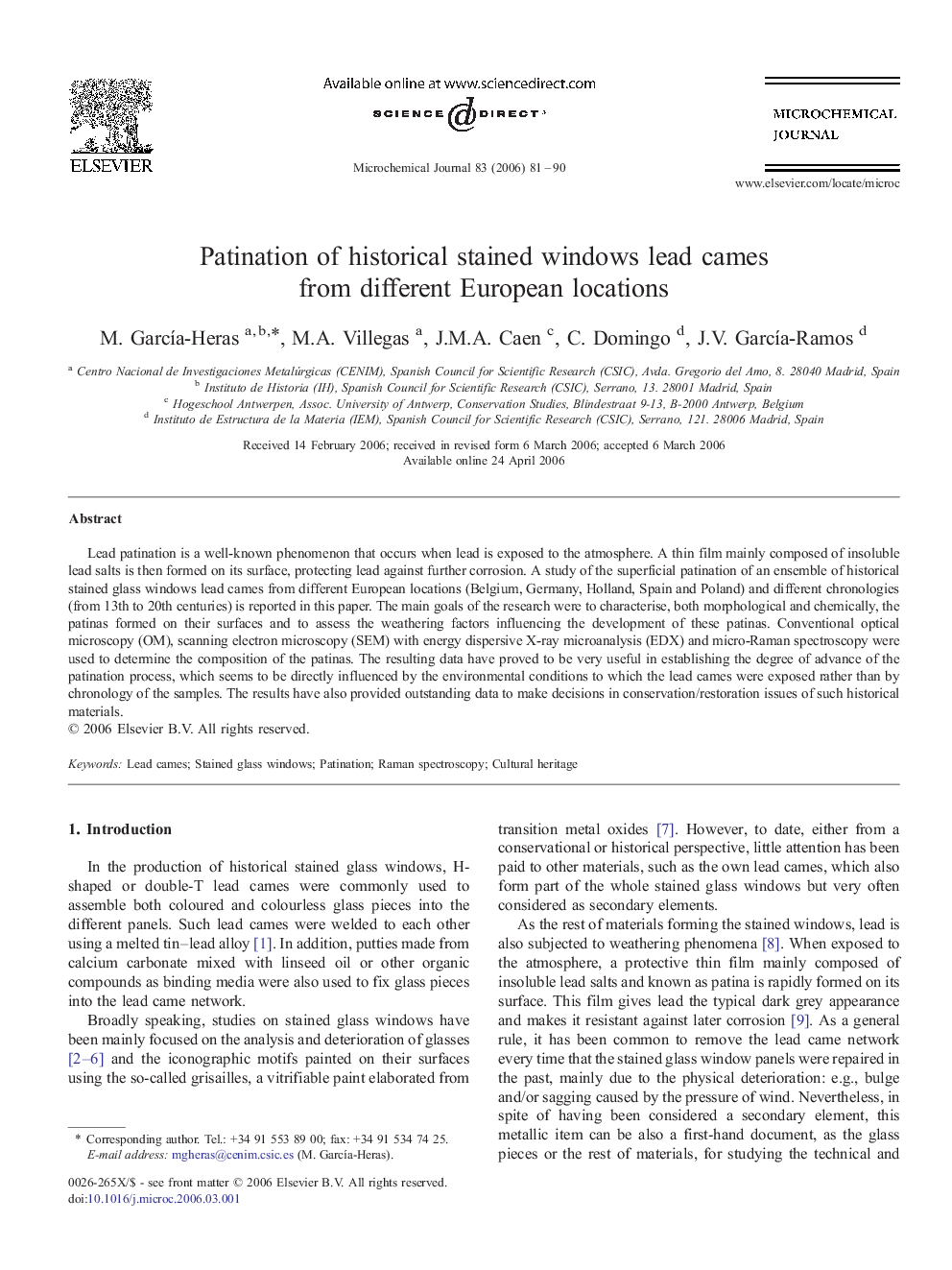| Article ID | Journal | Published Year | Pages | File Type |
|---|---|---|---|---|
| 1228582 | Microchemical Journal | 2006 | 10 Pages |
Lead patination is a well-known phenomenon that occurs when lead is exposed to the atmosphere. A thin film mainly composed of insoluble lead salts is then formed on its surface, protecting lead against further corrosion. A study of the superficial patination of an ensemble of historical stained glass windows lead cames from different European locations (Belgium, Germany, Holland, Spain and Poland) and different chronologies (from 13th to 20th centuries) is reported in this paper. The main goals of the research were to characterise, both morphological and chemically, the patinas formed on their surfaces and to assess the weathering factors influencing the development of these patinas. Conventional optical microscopy (OM), scanning electron microscopy (SEM) with energy dispersive X-ray microanalysis (EDX) and micro-Raman spectroscopy were used to determine the composition of the patinas. The resulting data have proved to be very useful in establishing the degree of advance of the patination process, which seems to be directly influenced by the environmental conditions to which the lead cames were exposed rather than by chronology of the samples. The results have also provided outstanding data to make decisions in conservation/restoration issues of such historical materials.
